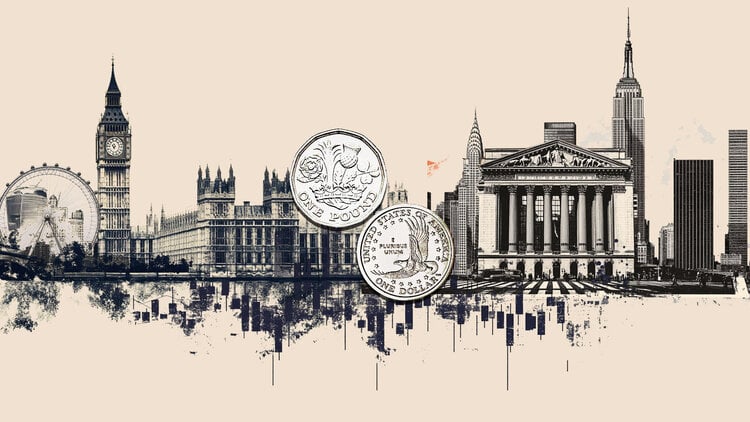- The New Zealand Dollar continues to rise on Wednesday as positive news out of China boosts commodity prices.
- The NZD had already rebounded after weaker-than-expected US CPI data raised hopes of an end to the global rate hike cycle.
- NZD/USD hits new highs and heads towards October highs at 0.6055.
The New Zealand Dollar (NZD) continues to consolidate the previous day’s gains on Wednesday, after a series of positive news on growth in China, its largest trading partner, boosted export prospects.
From a technical perspective, the pair’s short-term trend has turned bullish again and is approaching the key October 2023 highs at 0.6055.
Daily Market Summary: New Zealand Dollar – China in Focus
- The New Zealand dollar rebounds after data from China, which improves trade prospects and reverses the recent streak of lackluster readings.
- A package of support measures from the Chinese government, which represents an injection of 1 trillion yuan in low-cost financing for the beleaguered real estate sector, is also helping to allay fears of a credit crunch, according to an original story from Bloomberg News.
- Data released early Wednesday morning showed Chinese retail sales rose 7.6% year-on-year in October, far exceeding estimates of 7.0% and 5.5% earlier, according to China’s National Bureau of Statistics.
- Industrial production also beat expectations, coming in at 4.6% year-on-year in October, up from estimates of 4.5% and 4.5% previously.
- Investment in Fixed Assets stood at 2.9%, below the forecast of 3.1% (year-on-year in October) and the previous 3.1%.
- Good Chinese data, coupled with lower inflation data from the US, UK and several European countries, reduced fears about global growth and led to increased risk appetite, with strong rallies in indices. stock exchanges around the world.
- New Zealand is a major exporter of dairy products to China, so the positive flow of news helped support the outlook for the economy and demand for the New Zealand dollar.
- The US dollar has fallen after inflation data suggested a higher likelihood of no further interest rate hikes. This makes the US a less attractive place for global investors to park their capital, reducing demand for the Dollar.
New Zealand Dollar Technical Analysis: NZD/USD Continues Rising
NZD/USD – the number of US Dollars that one New Zealand Dollar can buy – extends its recovery above the important November 3 high at 0.6001 and sets its sights on the October high at 0.6055.
New Zealand Dollar vs. US Dollar: Daily Chart
The break above 0.6001 again confirms the short-term uptrend, with the next target at 0.6055.
The pair has broken above the 100-day SMA and fresh momentum above the October high of 0.6055 would change the medium-term outlook, indicating the possibility of the birth of a new uptrend. This move would target the 200-day SMA around 0.6100.
However, medium and long-term trends remain bearish, so the bearish potential remains high.
New Zealand Dollar FAQ
What factors determine the price of the New Zealand Dollar?
The New Zealand Dollar (NZD), also known as the Kiwi, is a well-known currency among investors. Its value is largely determined by the health of the New Zealand economy and the policy of the country’s central bank. However, there are some peculiarities that can also cause the NZD to move. The evolution of the Chinese economy tends to move the Kiwi because China is New Zealand’s largest trading partner. The bad news for the Chinese economy will likely translate into fewer New Zealand exports to the country, which will affect the economy and therefore its currency. Another factor moving the NZD is dairy product prices, as the dairy industry is New Zealand’s main export. High dairy prices boost export earnings, contributing positively to the economy and therefore the NZD.
How do RBNZ decisions affect the New Zealand Dollar?
The Reserve Bank of New Zealand (RBNZ) aims to achieve and maintain an inflation rate of between 1% and 3% over the medium term, with the aim of keeping it close to the midpoint of 2%. To do this, the bank sets an appropriate level of interest rates. When inflation is too high, the RBNZ raises interest rates to cool the economy, but the move will also drive up bond yields, making investors more attractive to invest in the country and thus boosting the NZD. On the contrary, lower interest rates tend to weaken the NZD. The so-called rate differential, or what rates in New Zealand are or are expected to be compared to those set by the US Federal Reserve, can also play a key role in the movement of the NZD/USD pair.
How does economic data influence the value of the New Zealand Dollar?
The release of macroeconomic data in New Zealand is key to assessing the state of the economy and can influence the valuation of the New Zealand Dollar (NZD). A strong economy, based on high economic growth, low unemployment and high confidence is good for the NZD. High economic growth attracts foreign investment and may encourage the Reserve Bank of New Zealand to raise interest rates if this economic strength is accompanied by high inflation. Conversely, if economic data is weak, the NZD is likely to depreciate.
How does overall risk sentiment affect the New Zealand Dollar?
The New Zealand Dollar (NZD) tends to strengthen during periods of risk appetite, or when investors perceive overall market risks to be low and are optimistic about growth. This usually translates into a more favorable outlook for commodities and so-called “commodity currencies” such as the kiwi. Conversely, the NZD tends to weaken during times of market turmoil or economic uncertainty, as investors tend to sell riskier assets and flee to more stable havens.
Source: Fx Street
I am Joshua Winder, a senior-level journalist and editor at World Stock Market. I specialize in covering news related to the stock market and economic trends. With more than 8 years of experience in this field, I have become an expert in financial reporting.

-638356476496180290.png)






